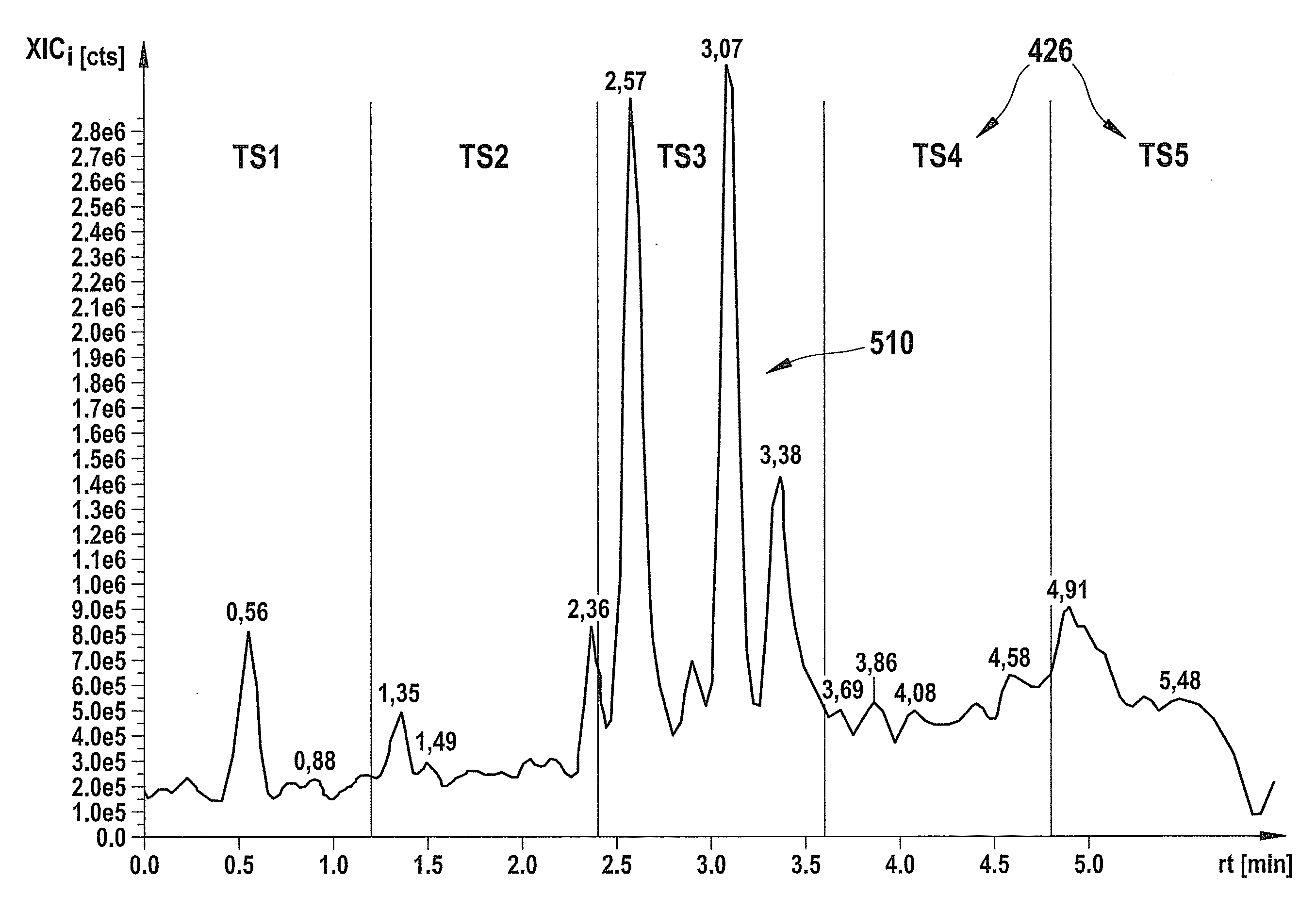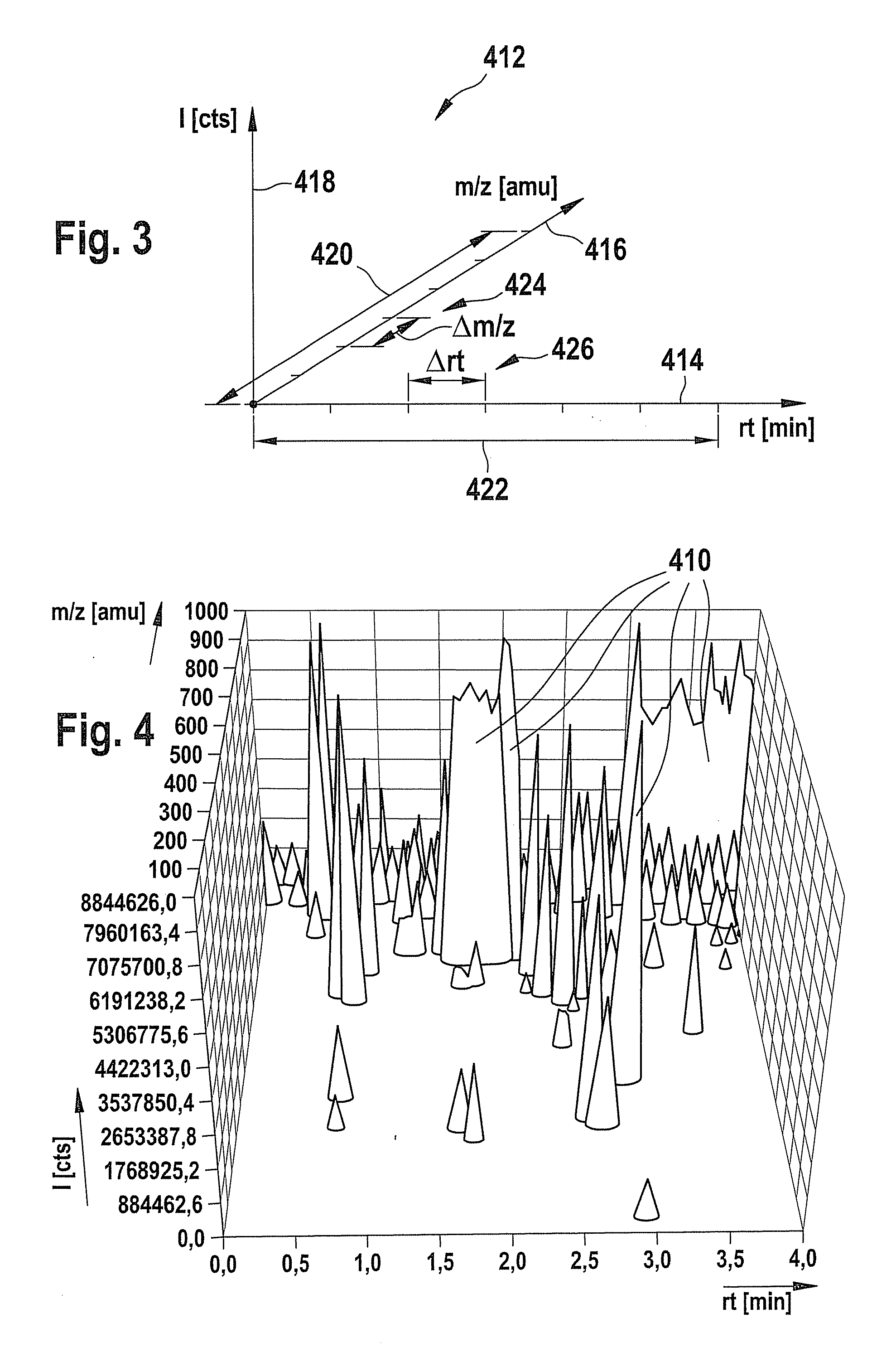System and Method for Characterizing a Chemical Sample
- Summary
- Abstract
- Description
- Claims
- Application Information
AI Technical Summary
Benefits of technology
Problems solved by technology
Method used
Image
Examples
Embodiment Construction
[0069]Further details and characteristic features of the invention will become clear from the following description of preferred embodiments in combination with the dependent claims. Therein, the respective characteristic features may be realized by oneself or in combination with other characteristic features. The invention is not restricted to the embodiments.
[0070]The embodiments are depicted schematically in the figures. Identical reference numbers in these figures denote identical or functionally similar or corresponding elements. The figures show:
[0071]FIG. 1 a preferred embodiment of the method according to the invention;
[0072]FIG. 2 a schematic setup of a preferred embodiment of a system for performing the method according to FIG. 1;
[0073]FIG. 3 a coordinate system of a three-dimensional first set of data characterizing a sample containing at least one compound;
[0074]FIG. 4 an example of a three-dimensional first set of data;
[0075]FIG. 5 an example of an extracted signal for ...
PUM
 Login to View More
Login to View More Abstract
Description
Claims
Application Information
 Login to View More
Login to View More - R&D
- Intellectual Property
- Life Sciences
- Materials
- Tech Scout
- Unparalleled Data Quality
- Higher Quality Content
- 60% Fewer Hallucinations
Browse by: Latest US Patents, China's latest patents, Technical Efficacy Thesaurus, Application Domain, Technology Topic, Popular Technical Reports.
© 2025 PatSnap. All rights reserved.Legal|Privacy policy|Modern Slavery Act Transparency Statement|Sitemap|About US| Contact US: help@patsnap.com



